Session II-1 Biotransformation/Biodegradation Overview
Begin by reading Chapter 4 Wiedemeier pages 162 -169. Pay particular attention to section 4.1, Biological Fate of Contaminants. Along with section 4.1 please refer to the rest of the text shown for session II-1 (approximately 17 pages of text and figures) which is intended to provide additional insight into the biotransformation/biodegradation process, the microbial cell, enzymatics, and genetic principals. The material in session II-1 forms the basis for understanding the biotransformation process at the scale where substrate (contaminant), electron acceptor, and other growth nutrients interact the surface of the microbial cell.
Biotransformation/Biodegradation vs Bioremediation
- The process by which organic chemicals are degraded by microorganisms is called biodegradation. The term biotransformation is commonly used interchangeably with "biodegradation" in contemporary literature as well as in the material for Module II.
-
The technology by which those microorganisms are manipulated for the purposes of degrading organic contaminants is called bioremediation.
Requirements for Biotransformation (Biodegradation) of Organic Contaminants
- Microorganisms: A sufficient population and an appropriate type.
Just as a few million bacterial cells are hopelessly armed to tackle the rigors of cleaning up a contaminated site of several hundred cubic feet in size, so too is a single cluster of a dozen organisms on the surface of a soil grain unsuitable for cleaning up the water flowing through nearby pore space. Thus, in order for microbial biotransformation to really "make a difference", the microbial population must have grown sufficiently in size to efficiently "feed" on the chemical. In addition, if the microbes at the site are unable to transform the specific chemicals of concern, then even in large numbers, they will be unable to exert significant impact for site cleanup. Thus, the appropriate enzymatic machinery targeted towards transforming the chemical of concern is required. In some cases, where the chemicals of concern are unusual xenobiotics that are unlike anything that exists in the natural environment, bioaugmentation is required.
- Energy & Carbon Source: The contaminant; not usually a problem!
A source of energy (e.g., provides ATP during its biotransformation to drive the cell's biological machinery) as well as a source of carbon (remember, the cell's key macronutrient is carbon--see Nutrients below) are required for both cell function (anabolism) and cell growth (catabolism).
- Contaminant Bioavailability: Aqueous phase contaminant.
It is often assumed that a chemical (or any nutrient, for that matter) must be present in the aqueous phase in order to be biotransformed. The reasoning behind this assumption is simple--microbes are aquatic organisms that depend on the diffusion of substances across their membrane from their aquatic environment. Thus, any nutrient present in a soil, NAPL, or air phase may not be directly accessible by microbes, and thus, is not bioavailable. Bioavailability is governed not only by the quantity of nutrient present in the aqueous phase (low aqueous phase concentrations may result in a phenomenon known as "concentration-limited bioavailability"), but also by the rate of mass transfer from nonaqueous to aqueous phases (slow rates of mass transfer from nonaqueous to aqueous phases may result in a phenomenon known as "mass transfer-limited bioavailability"; for example, slow rates of chemical desorption from a soil particle may result in a condition known as "desorption-limited bioavailability," a special case of mass transfer-limited bioavailability).
- Electron Acceptors: e.g., O2 , NO3 , SO4 2- , CO2
A biological transformation reaction is a special type of reaction known as an oxidation-reduction (or "redox") reaction. Such reactions are characterized by the transfer of electrons from more reduced substances to more oxidized substances. In a typical reaction where a hydrocarbon such as benzene is oxidized to catechol under aerobic conditions, benzene acts as the electron donor and oxygen acts as the electron acceptor. In the absence of an electron acceptor, a redox reaction will not proceed.
- Nutrients: The "chemical formula" for a microbial cell is C5 H7 O2 NP0.083 ; thus, it is clear that required nutrients for cell growth include carbon, hydrogen (from chemical hydrocarbons or water), and oxygen (usually from water or the electron acceptor).
- The Primary Nutrients N and P: In addition, the primary nutrients of nitrogen (N) and phosphorous (P) are required. These nutrients are often required in forms that are not part of the carbon source or electron acceptor.
- Other Macronutrients: Ca, Mg, and Fe Calcium (Ca), magnesium (Mg), and iron (Fe) are also required for cell metabolism. They are termed "macronutrients" because they are often present in sufficient quantities in soils such that Ca/Mg/Fe supplements are not needed to facilitate biotransformation (i.e., the macronutrients usually do not limit biotransformation rates).
- Trace nutrients (i.e., trace metals): Trace metals (e.g., Cu, Zn, Al, Vd, Mb, etc. etc.) are termed as such because (1) they are present only in small quantities in soils, and (2) very small amounts are required for cell function. Often, excess concentrations of trace metals can be toxic to microbes and inhibit biotransformation (unlike excess concentrations of primary and macronutrients, which may not necessarily be toxic to microbes). Trace metal "pollution" is particularly troublesome where organic chemicals (which are degraded by microbes) are co-deposited with toxic metal wastes, as might be the case when a mine waste leachate reaches a plume of organic solvent used in the cleaning of mining machinery. A more common circumstance occurs when organic detergent solutions are used to clean machinery parts, floors, etc., in metal refineries, and then discarded down a floor drain, eventually reaching the soil environment.
- Acceptable Environmental Conditions: Temperature, pH, and substrate concentration.
Even if you have all of the ingredients for making a chocolate cake in a baking pan, you won't get a perfect cake until the environmental conditions are correct ( i.e., high temperature and low ambient humidity). The same goes for contaminant biotransformation. Nutrients, chemicals, microorganisms, and electron acceptors provide the necessary ingredients for redox reactions to proceed, but without the appropriate environmental conditions -- moderate temperature, moderate pH, and moderate substrate concentrations -- biotransformation will occur very slowly or not at all.
Of particular importance is the substrate concentration. It must be sufficiently high enough to induce enzymatic activity -- we call this concentration the threshold substrate concentration, often denoted by Smin . Alternatively, the chemical must not be at a concentration high enough to induce adverse biological behavior through some type of toxicity mechanism. We call this maximum concentration Stox .
Thus, for a substrate concentration S such that Smin < S < Stox , and for moderate temperatures (i.e., 20-40 deg C) and pH (5-9), the biotransformation process will proceed normally. Of course, each specific microbial population will have specific conditions (defined by optimum values of S, T, and pH) where biotransformation will proceed at a maximum rate for that particular population.
The Microbial Cell: Membrane Structure and Metabolism
- Cell Structure: In general, most living cells are quite similar. As shown in Figure II-1, they have a cell wall, which may be either a rigid or flexible membrane. If the cell is motile, it may possess flagella or some other hair-like appendages serving as a means for propulsion. The interior of the cell contains a colloidal suspension called the cytoplasm, containing carbohydrates, proteins, and other complex organic compounds that participate in normal cell function.
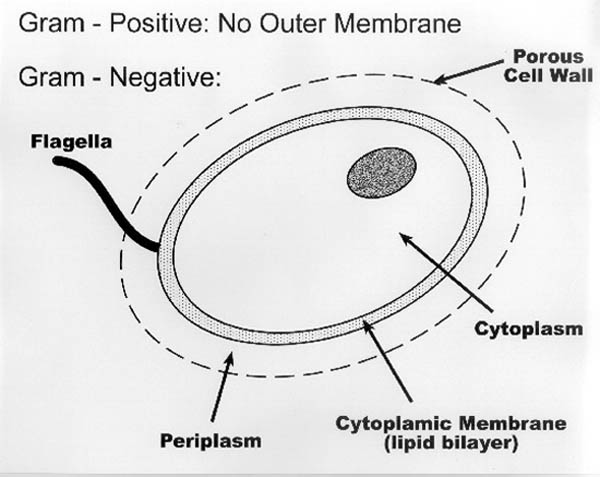
Figure II-1. Cellular Membrane and Wall Structure
Each cell contains nucleic acids, the hereditary material that is vital to reproduction. The cytoplasmic area contains ribonucleic acid (RNA), whose major role is in the synthesis of proteins. Also within the cell wall is the area of the nucleus, which is rich in deoxyribonucleic acid (DNA). DNA contains all the information necessary for the reproduction of all the cell components and may be considered to be the blueprint of the cell. In some cells, the DNA is enclosed by a membrane and the nucleus is clearly defined (eucaryotic cells). In other cells, the nucleus is poorly defined (procaryotic cells, which include bacteria).
- The Cell Membrane: The bacterial cell membrane (Figure II-2) is a fluid, dynamic membrane that is composed primarily of a cytoplasmic membrane made up of a lipid bilayer structure of phospholipids (Figure II-3). In addition, gram-negative bacteria have an "outer" membrane that includes lipid bilayer structure harboring a variety of functional proteins, enzymes, lipoproteins, and polysaccharides (Figure II-2). Between the gram-negative outer membrane and the cytoplasmic membrane, a film of fluid called the periplasm exists. The periplasm is a common location for plasmids that contain the genes that produce the enzymes that regulate the transformation of a variety of environmental contaminants.
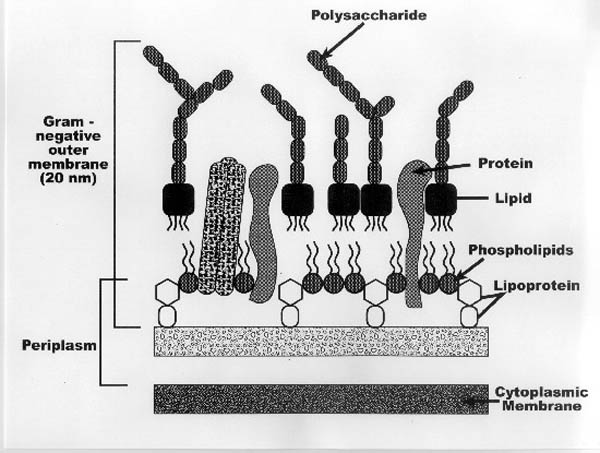
Figure II-2. Cross-Section of a Gram-Negative Bacterial Cell
- The Cytoplasmic membrane:
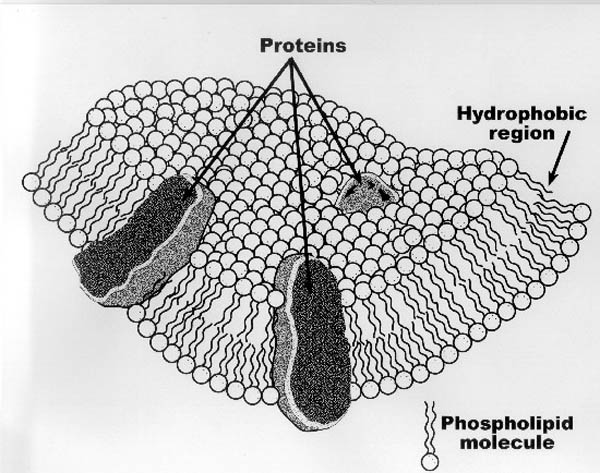
Figure II-3. Cross-section of the cytoplasmic membrane showing the phospholipid bilayer structure and membrane-bound proteins. The interior wall (exposed to the cell's cytoplasm) and exterior wall (exposed to either the periplasm--for gram negative cells--or the environment--for gram positive cells) are hydrophilic (water-loving) in nature, while the interior of the membrane is hydrophobic. This hydrophilic-hydrophobic structure is the root of the term "bilayer", and forms when the hydrophobic ends of the phospholipids orient themselves toward each other in this "lamellar" structure. Proteins that are relatively hydrophobic will tend to orient themselves across the membrane as shown in the figure, since by the nature of their hydrophobicity, are attracted to the hydrophobic region of the membrane. Hydrophilic proteins and other charged substances, on the other hand, may be attached the membrane's hydrophilic surfaces.
Energy and Carbon Sources: To continue to normal function (reproduction and other cell functions), a microbial cell must have a source of energy and carbon for the synthesis of new cellular material. Inorganic elements, such as nitrogen and phosphorus (the "primary nutrients"), calcium, sulfur, potassium, magnesium, and iron (the "macronutrients"), and other trace nutrients, are also vital to cell synthesis. Two of the most common sources of cell carbon for microorganisms are carbon dioxide (dissolved in water from equilibrium with the atmospheric CO2 and/or a subsurface carbonate buffer system), and organic matter.
- If an organism derives its cell carbon from carbon dioxide, it is called autotrophic
- If an organism derives its cell carbon from organic carbon, it is called heterotrophic.
The energy source (electron donor) supplies electrons to the cell in 3 stages
- Removal of electrons from the donor (oxidation)
- Transfer of electrons through one or a series of electron carriers
- Addition of electrons to the terminal electron acceptor (reduction)
Electron transport systems consist of a series of electron carriers (i.e., NAD+ , NADP+ ). Some electron carriers are fixed in membrane structures (e.g., analogous to the trans-membrane proteins shown in Figures II-2 and II-3), while others are freely diffusible, transferring electrons to various parts of the cell. A simplified view of cell metabolism is shown in Figure II-4.
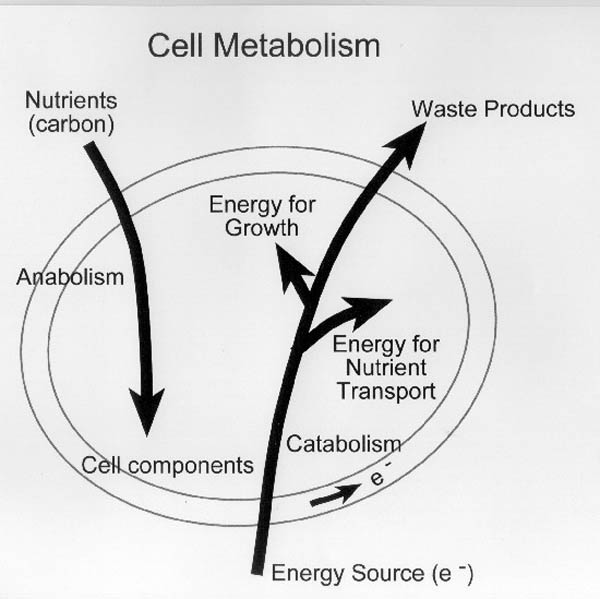
Figure II-4. Conceptual diagram of cell metabolism. Cells must have a supply of carbon and energy (electrons) to maintain their metabolism. Carbon/energy may be supplied from a single substrate (i.e., glucose, benzene) or from separate sources (i.e. CO2 for carbon and H2 as an electron donor).
- Anabolism is the process by which a cell uses energy to use carbon and nutrients for biosynthesis (the manufacture of cellular components, including new cells).
- Catabolism is the process by which a cell transforms an energy source (electron donor) into usable energy that can be used to facilitate normal cell function.
Keep in mind that catabolic reactions that create energy are required to carry out ALL cell functions, including anabolism.
A cell can catabolize without anabolism,
but a cell cannot anabolize without catabolism.
Summary of the Biotransformation Reaction
- The requirements for a biotransformation reaction include a substrate (a carbon and energy source/electron donor), and electron acceptor, cellular nutrients, and microorganisms with the proper enzymatic machinery. Products of the biotransformation reaction include products of cell anabolism (biosynthesis of new cells, proteins, etc.) and byproducts of the parent compound that was biotransformation (called reaction end points or intermediates).
Enzymatic Catalysis of Biotransformation Reactions
- Biotransformation is the alteration of the chemical structure of a compound by enzyme(s) produced by microorganism(s) such that new compound(s) are formed. See Figure II-5.
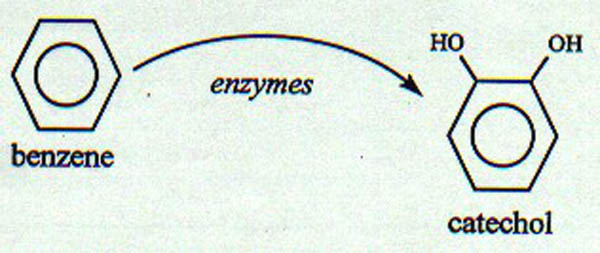
Figure II-5. Conceptual diagram of the biotransformation of benzene to catechol, as mediated by microbial enzymes.
-
The activation energy must first be overcome before a chemical reaction can proceed. A catalyst may decrease the amount of activation energy required for the reaction to occur. Catalysts produced by microorganisms that decrease the activation energy are called enzymes.
-
Enzymes are large protein molecules which have a high degree of specificity for particular reactions. This specificity results from the three-dimensional structure of the enzyme that result in its ability to act as the "key" for a particular reaction "lock".
-
While many chemical reactions (such as the transformation of benzene to catechol) may occur in the absence of microorganisms, some chemical reaction rates are imperceptibly observed; enzymes typically increase reaction rates by 108 to 1020 times the abiotic reaction rate.
Examples of Enzyme-Mediated Reactions
- Aerobic Biotransformation of Benzene to Catechol. The biotransformation of benzene in an aerobic environment is catalyzed by an enzyme called an "oxygenase", which put simply, is an enzyme that uses molecular oxygen to oxidize a molecule, with the products usually being a more oxidized molecule (e.g., catechol) and hydrogen. Refer to Figure II-6.
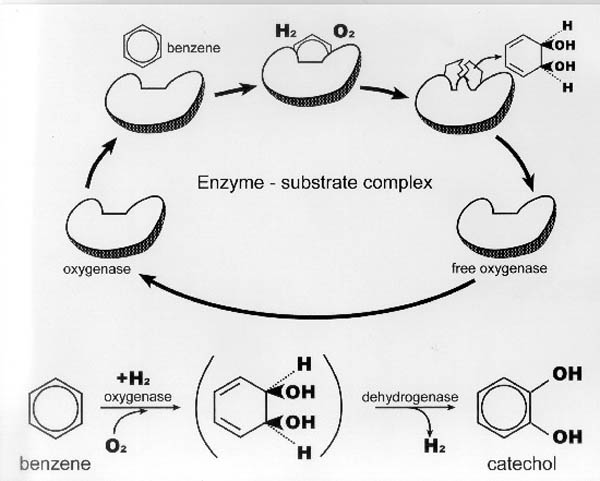
Figure II-6. Enzymatic catalysis of the biotransformation of Benzene.
Note in the figure the conceptual presentation of the enzyme-substrate complex, with the enzyme's "shape" uniquely suited to this particular substrate. This is a common feature of enzymatic reactions and is a key feature of what we call "reaction specificity". The second step in the reaction is catalyzed by the hydrogenase enzyme to produce catechol.
Genetic Principles
So where do enzymes come from? Enzymes don't just magically appear. They must be manufactured by the cell. But how does a cell know what enzymes to make? Let's look at this process in more detail.
Let's now examine how the biotransformation process is controlled by basic genetic principles by answering the following question: How is biotransformation controlled by genes, DNA, RNA, and enzyme production?
The hereditary information of every cell in all organisms is carried by molecules of deoxyribonucleic acid (DNA). These molecules are composed of two long chains (the "double-stranded helix") containing four kinds of building blocks, called nucleotides. The arrangement (and particularly, the order) of these nucleotides represents a "code", which tells the cell how to construct proteins.
Two key steps in the building of a protein are the transcription of the genetic code from DNA to RNA (ribonucleic acid), and then its translation into a sequence of polypeptides that make up a protein molecule.
Enzymes are a type of protein, and this is how they are made. Enzymes are large protein molecules that act as catalysts for most of the chemical reactions that take place in living organisms. For example, some bacteria can break down naphthalene to salicylate through a process of six reactions, each catalyzed by a specific enzyme. Similarly, salicylate can be broken down to pyruvate by another seven enzymatic reactions (Figure II-7).
The sequence of enzymes involved in the degradation of naphthalene--and the corresponding sequence of genes that control their formation--is well known. The genes, labeled nah A, nah B, and so forth, occur in two discrete sets. The first set is called the nah 1 operon; the second is called the nah 2 operon.
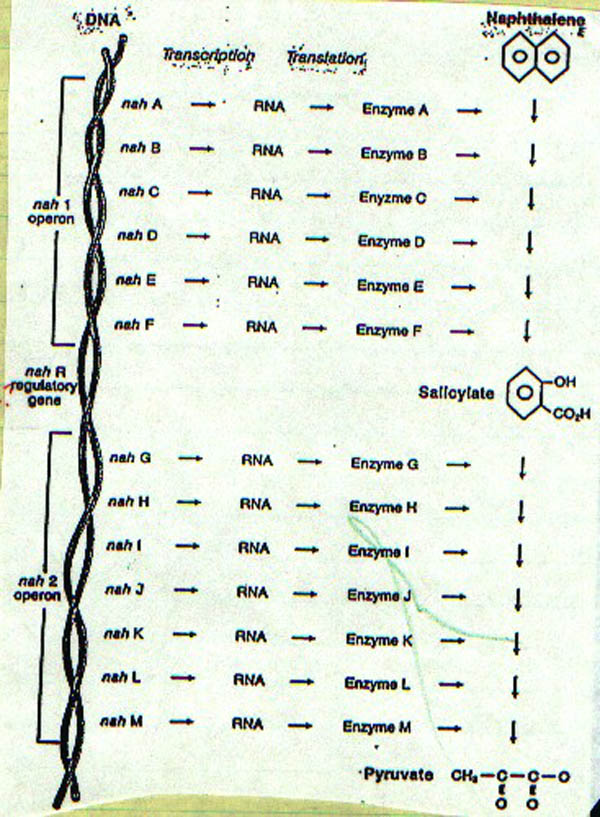
Figure II-7. Gene sequences for enzymes responsible for naphthalene biotransformation.
Thus, in summary:
- Gene sequences, or operons, are coded in a cell's DNA
- These codes are used to transcribe (replicate) DNA into RNA
- RNA is used to translate (build) proteins (enzymes)
- Enzymes are used to catalyze biotransformation reactions
For the breakdown of many other organic materials by bacteria, such detailed gene sequences have not yet been identified.
Written Assignment: Questions II-1 through II-4